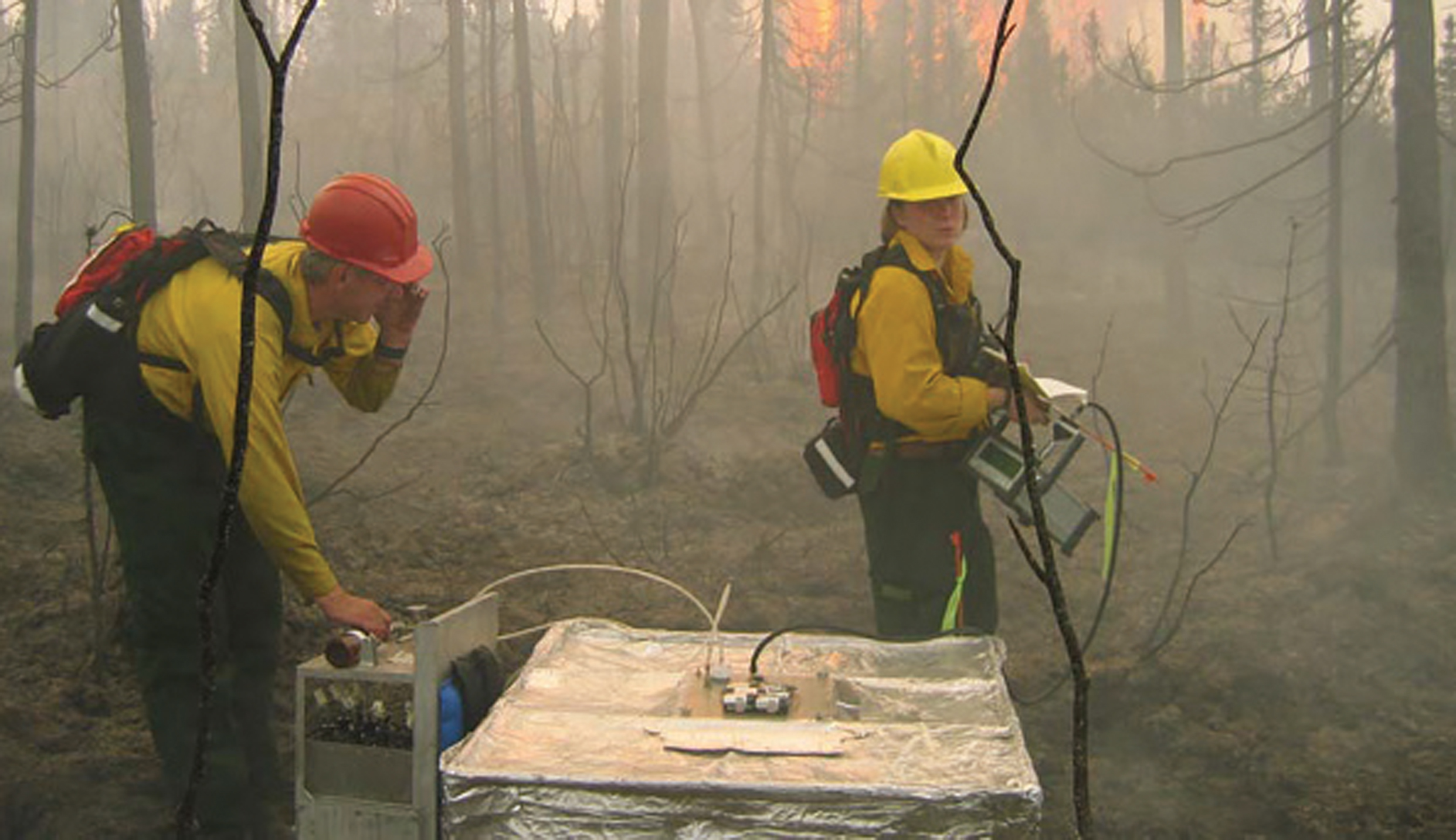Career of the Month
An Interview With Atmospheric Scientist Shawn Urbanski
An Interview With Atmospheric Scientist Shawn Urbanski
By Luba Vangelova
Atmospheric scientists study the chemical composition of the atmosphere. More specifically, they look at how atmospheric gases, liquids, and solids interact both with each other and with the earth's surface. This helps people understand such phenomena as air pollution, ozone depletion, and climate change. Shawn Urbanski is a research physical scientist at the U.S. Forest Service’s Rocky Mountain Research Station in Missoula, Montana. He studies wildfire smoke chemistry and the impact of wildfire smoke on air quality.

Work overview
My research looks at how much smoke is produced by wildfires—what gases and particles make up the smoke, how these particles behave over time, and how smoke travels and impacts air quality. This involves a combination of desk work—analyzing satellite images and computer models—and laboratory or field work.
Satellite images provide information about fires, such as where and when they burn, how great an area they burn, and what their impacts are on forests and rangeland. Computer models simulate the atmosphere and the production and transport of smoke from wildfires. For field experiments, we fly around smoke plumes and measure the chemistry of the smoke and how it changes and affects the atmosphere. Laboratory work involves burning vegetation (sampled from forests) in a combustion facility, and measuring the chemical composition of the smoke. Doing experiments in the lab allows us to control conditions and repeat experiments, which can’t be done for wildfires.
My favorite part of my job is doing field experiments. My least favorite part is administrative paperwork, such as budgeting, and required administrative training.
Career highlights
A memorable moment was learning that I had been awarded a graduate research assistantship. I had worked my way through school as an undergraduate, and I thought it was incredible that a school would pay me to go to class and conduct research. Another highlight was my first published scientific paper.
Career path
I became fascinated with severe weather when I was about four years old, living in Minnesota. There was a tornado warning, and the sirens were scary but exciting. I then learned that some people forecasted weather for their jobs, and I decided that I wanted to do something involving weather when I grew up.
After high school, inspired by a television program about severe-weather researchers at the University of Oklahoma, I went there to study meteorology. During my freshman year, I became very interested in what I was learning in my general chemistry class. I decided that I wanted a career that involved both meteorology and chemistry. I graduated with a degree in meteorology, but I also took a lot of chemistry classes. This prepared me to study atmospheric chemistry in graduate school at the Georgia Institute of Technology.
After graduate school, I worked as a post-doctoral fellow and studied forest carbon exchange. We measured the exchange of carbon dioxide, water, and energy between a forest and the atmosphere, and used the data to estimate how much carbon dioxide the forest removed from the atmosphere (CO2 uptake) and how this varied with climate. I then started working for the U.S. Forest Service.
Knowledge, skills and training needed
My work requires knowledge of chemistry, meteorology, and mathematics. Additionally, you have to know how to program computers, use GIS (geographic information systems) software, and use various instruments.
You usually need to have some foundational skills in these areas beforehand, but you can develop the skills further on the job. A PhD is required to get a job as a research scientist, and it’s often required if you want to lead a research group or team. However, you can become a fire-related research team member with just a BS or MS degree in a field such as chemistry, forestry, physics, or mechanical engineering.
Advice for students
Figure out what aspects of the field interest you most, and be open to a range of work opportunities that involve those activities. Also, try to get some firsthand exposure to the work, for instance by touring a lab or shadowing a scientist for a day.


